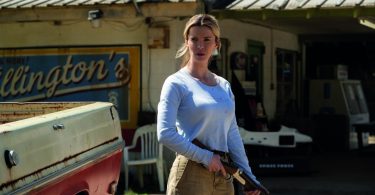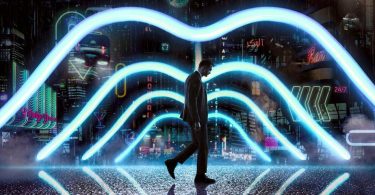The power of cinema lies in the effects films have on people. Films can make you cry, laugh, alter your opinions, influence you, be representative of a milestone in your life and can even change your life. Our new weekly film column, ‘The Film That…’, explores the impacts of cinema on people. This week, Scott Wilson shares how The Tribe made him look away from the screen.
I made it through Saw II without looking away from the screen. It made my skin crawl and made me genuinely uncomfortable when Amanda was thrown into the needle pit, but I never looked away.
Along with all the other torture porn movies, we were bombarded with increasingly graphic shots in mainstream horror throughout the 2000s, such as the heel-slitting Hostel scene, that tried to disgust the viewer in a variety of inventive ways.
There is a sick and twisted voyeuristic impulse that emerges in us during these movies. We watch them because we want to see some dark shenanigans, and more often than not the characters deserve what happens to them anyway.
It is when that hyper-graphic and hyper-violent nature is taken out of the expected horror genres and showcased in gritty and depressing dramas where the impact has its actual intended effect – instead of wanting to peer a little closer to see just how much the blood splattered after someone’s ribcage was ripped apart by some mad Jigsaw game, the realistic brutality is unsettling and relatable.
It is made even more intense in The Tribe since you literally cannot look away – the movie has no audible dialogue because every character is deaf and communicates through Ukrainian sign language. To those of us who cannot understand Ukrainian sign language, The Tribe is more akin to a dance. Instead of relying on being told what is happening through language, we are shown through the events in front of us and the emotion between characters while they are signing.
The events in front of us are rarely heart-warming. A boy is sent to a school for deaf children where he is dragged into a life of organised crime involving robbery and prostitution. His initiation process involves a fight, before he is assigned to pimp out girls in the gang at an overnight car park for trucks. Whenever the students need alcohol for a gathering in the park, they assault a lone shopper on his walk home.
 The brutality is everywhere in The Tribe – the brutalism of Eastern European architecture is rife, and that dilapidated, outdated, and forgotten aesthetic is a comfortable bedfellow for the harrowing scenes in the movie.
The brutality is everywhere in The Tribe – the brutalism of Eastern European architecture is rife, and that dilapidated, outdated, and forgotten aesthetic is a comfortable bedfellow for the harrowing scenes in the movie.
Where horror movies have shaky camerawork and discordant sounds punctuating violent encounters, The Tribe is stark and real – the sound of fighting is punches and heels grasping for the ground. The build-up is not a swelling of strings but rather an increase in pace as someone prepares to swing.
So the violence is both familiar and foreign. It is what we hear in news reports, but (hopefully) never see in person. It is skinned knees and random muggings, increasingly violent as the main character works his way through the ranks, and not once does the film veer towards Hollywood violence, where a protagonist can outlast anyone simply because the rules of blockbusters say they have to!
Sure, The Tribe is graphic in every sense. The sex scenes play out with a still-camera watching as couples progress from the initial kiss to having sex on the floor. A Google image search of the movie sees the majority of the initial results involve some type of nudity, whether that is two characters sitting on the floor, staring at each other naked, 69ing, or a woman about to have a back-alley abortion.
Game of Thrones and other HBO shows have desensitised this generation to sex on screen, but a harrowing rape scene is tough to watch (despite Game of Thrones doing its best to desensitise us to them too), and the following abortion scene even more so. You are with her every step of the way as a woman props her legs up as she sits over a bath tub and gets to work as she cries and writhes as blood drips from between her legs. And then it’s back to life as a pimp straight after.
 By the end, when part of the gang are holding a boy’s head in a sink full of water, only to smash the back of his head with glass and leave him to drown in a pool of water and blood, you have to look away for some respite. Moments later, a boy sneaks into the dorm rooms of the gang and drops heavy chests of drawers on their heads as they sleep, and blood stains the walls.
By the end, when part of the gang are holding a boy’s head in a sink full of water, only to smash the back of his head with glass and leave him to drown in a pool of water and blood, you have to look away for some respite. Moments later, a boy sneaks into the dorm rooms of the gang and drops heavy chests of drawers on their heads as they sleep, and blood stains the walls.
I am not entirely convinced The Tribe caused me to look away out of disgust. I love film, I love being pushed, and I love when art is visceral. Rather, I had to look away from exhaustion. The violence is not contained to one section of the film, but is a prolonged constant in the lives of the characters – weaker characters would have died sooner, and I was not strong enough to watch for two hours straight without disconnecting, if only for a moment, from the relentless reliability of distressing scenes.
I had a similar experience with the Peter Mullan movie Neds, where the realistic portrayal of violence was extremely difficult to watch. I can only assume that what hits me is the relatability; that living in a poor area means that these lives of struggle and desperation are not as foreign to me as they are to others. The Tribe is an extreme example, but the attitude is enough for me to not to have to suspend my belief or place faith in artistic liberty – to me, this movie makes me forget I am watching a film, and so the violence is the toughest thing to watch I have ever seen on screen.








